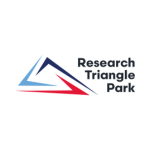Two of the nation’s hottest COVID-19 topics is the need for the U.S. to ensure medical supply lines through domestic pharma and bio manufacturing plus maintaining our scientific expertise in bio innovations. Billions of dollars of funding for new vaccine production are being deployed across the country; medical device production is increasing; and new policies are being debated in Congress and The White House. Last week the Trump Administration issued a “Buy American” executive order with potential impact to drug manufacturers and patients. See below for details on the executive order from BIO.
On September 15, 2020 AURP will explore how your region, your park, innovation district or company can participate in the bio and pharma manufacturing renaissance. Connect with manufacturing executives, policy experts, developers and related industry leaders to examine how life science manufacturing is evolving to meet the challenges of COVID-19 to identify emerging tech clusters. Additionally, AURP will award the NIST-sponsored National Institute for Innovation in Manufacturing Biopharmaceuticals (NIIMBL) its COVID-19 Excalibur Award for Response and Resiliency, located at the University of Delaware Research Park. Cost for the webinar is $75 for AURP members; $99 for non-members.
Register at https://www.aurp.net/bio-and-pharma-manufacturing-renaissance
This AURP forum on September 15th is a preview of the AURP International Conference taking place virtually November 2-6, 2020 – CHANGEMAKERS:
Leading Communities of Innovation in Uncertainty.
What you need to know about Trump’s “Buy American” order
Last week, President Trump issued another executive order with potential to impact drug manufacturers and patients. Here’s what you need to know.Dubbed the “Buy American” order, the goal is to increase domestic manufacture of “essential medicines,” “medical countermeasures,” and “critical inputs,” and in turn, decrease America’s reliance on medicines manufactured in foreign countries.
What it doesn’t do: The order does not require any manufacturer to physically move production of any particular medicines back to the United States.
What it does do: It incentivizes production in the United States by directing federal agencies involved in contracting for these products to apply preferences aimed at increasing domestic procurement of them. However, agency heads can waive the preferences if sufficient supplies do not exist domestically, or if a number of other exceptions apply.
The order specifically directs the Food and Drug Administration (FDA) to accelerate review and approval of domestically manufactured essential medicines. We anticipate FDA would need to issue some guidance on this in the future.
It might affect trade, too. The order directs the U.S. Trade Representative (USTR) to modify trade agreements to allow preferential procurement of domestically produced products and allow tariffs on imported medicines. And yes, this could trigger reciprocal action or even tariffs from trading partners.
What’s next? We expect affected agencies (FDA, HHS, DoD, USTR) to engage in some kind of public dialogue about the implementation, so stay tuned. In the meantime, BIO will continue to work with our allies to mitigate the impacts on our sector and the patients we serve—and articulate why a resilient, diverse, dynamic supply chain is critical to ensuring access to medicines, in normal times and in emergencies.
From Good Day BIO, August 11, 2020


 Here Comes the Sun: Here Comes 2021!
Here Comes the Sun: Here Comes 2021!





















